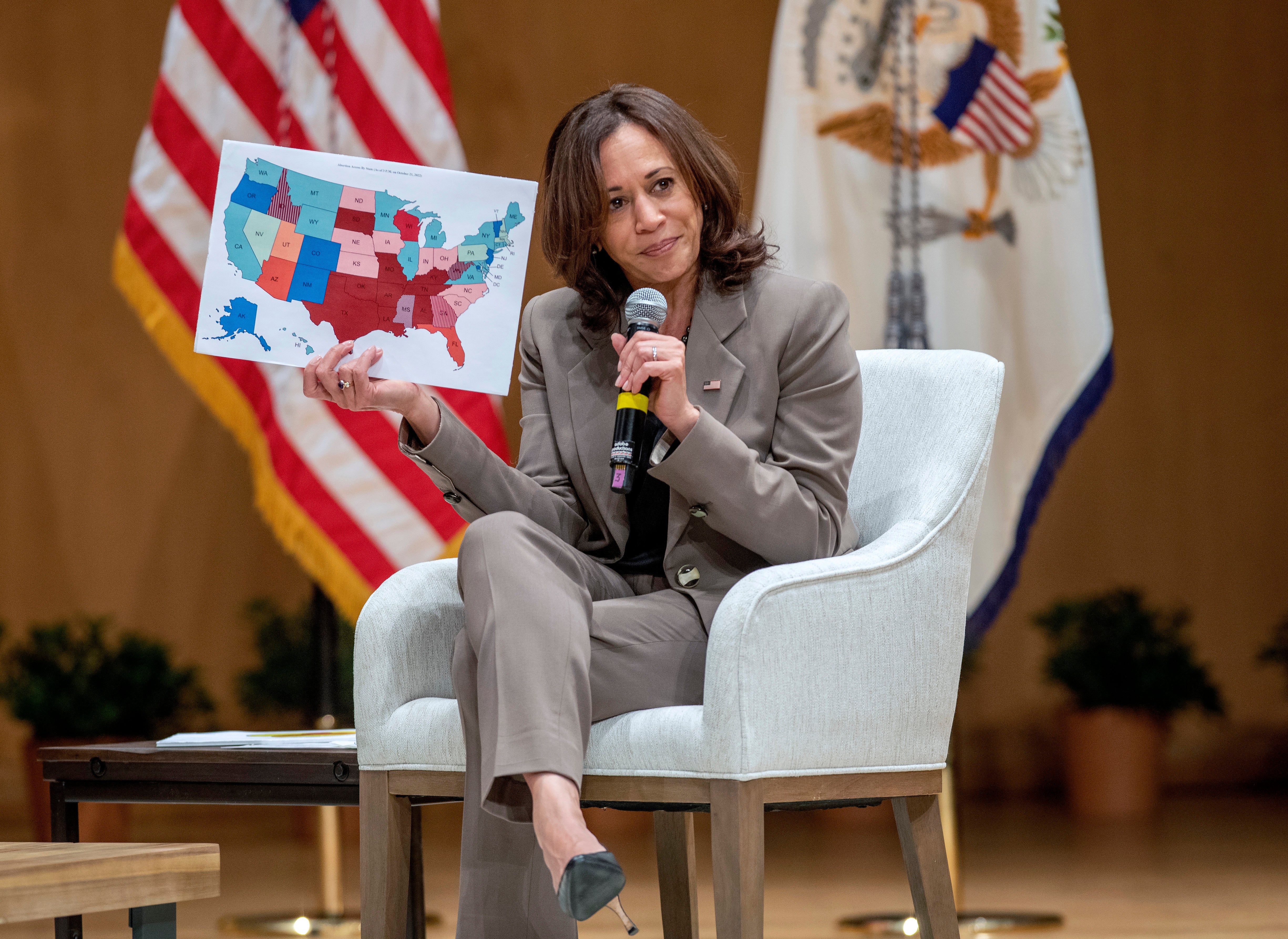This is how much abortion will actually affect the midterm election results
Polling is mixed on whether Americans are changing their votes after the overturn of Roe v Wade. It’s worth looking at the numbers closely to parse out what’s really happening


If current forecasts are to be believed, the Democrats will get pulverized at the polls during the midterm elections. Their only hope is that the pollsters are missing millions of new voters motivated to vote because of the overturn of Roe v Wade.
The consensus is that Republicans have at least a 50/50 chance of retaking control of the presently evenly-divided Senate. And recent forecasts have dramatically increased the expected number of House seats that will switch parties. The GOP needs only to pick five seats among the 435 House elections nationwide to take control of that chamber and therefore the purse strings of the US government.
The pollsters are assuming that Republicans will have the turnout edge, as the out-of-power party typically does in midterms. But there are no statistical models for how pollsters should account for the elimination of a constitutional right to abortion that women have had for nearly five decades. Will that drive previously unlikely voters and especially younger women who typically do not vote in midterms to the polls?
According to the Brookings Institute, 52% of the 2020 electorate were women, and women traditionally out-vote men. While men view abortion as a social issue, for women it’s a health and core economic one. But polling has not shown a radical shift to Democrats since Roe was overturned.
According to FiveThirtyEight, the odds of the Democrats retaining control of the Senate are 47%, down from 71% in June. The Senate is currently tied 50/50, but in Democratic control with Vice President Kamala Harris providing the tie-breaking vote. On Friday, Decision Desk HQ for the first time made the GOP the favorites to seize control of the chamber (50.4% chance.)
On the House side, Republicans have been year-long favorites to make up the current five-seat deficit the entire year. But those odds and the expected margin have increased of late. The GOP odds of controlling the House are now 85%, according to FiveThirtyEight. That’s the highest it’s been since Roe was overturned in June.
This is despite the Democrats having a 46-25 lead as the best party to tackle abortion policy, according to Reuters/Ipsos survey data published October 17. Abortion rights was rated the number one issue by 20% of voters polled in September by Data for Progress. The GOP’s “Commitment to America” didn’t highlight abortion policy, but does list “protect the lives of unborn children” under its promise to “Preserve Our Constitutional Rights.”
Democrats worry that abortion is fading as an issue despite polling showing that more Americans than ever prefer abortion remain legal in “all/most cases.” On Wednesday, Quinnapiac announced that their most recent poll had abortion as the number one issue of only 10% of voters (second behind inflation, the number one issue for 36% of voters).
In the key swing state of Georgia, Republican candidate Herschel Walker’s support has only increased after reports surfaced of him paying women he impregnated to have abortions despite previously advocating that there should be no exceptions for rape, incest and the life of the mother in abortion policy. Walker is edging current Senator Raphael Warnock, a Democrat, in recent polls.
But since Roe was overturned, the Democrats have actually surpassed forecasts in a number of special elections. The one time abortion was literally on the ballot was in Kansas, a state which Donald Trump won by 15 points in 2020. Kansas held a referendum on whether abortion should be banned in the state not long after the Supreme Court ended the constitutional right to abortion, and Kansas polling said that the anti-abortion side would prevail by four points. That turned out to be off by 22 points. The abortion proponents won, 59% to 41%, sending a clear message even from a red state that a full abortion ban wasn’t wanted. The key to this victory for women’s rights? Democratic turnout was wildly underestimated, with about 30% more people voting than was anticipated.
Any hopes that Democrats have in maintaining control of the House would require a similar polling error. But abortion isn’t directly on the ballot in these key races as it was in Kansas in August.
A massive polling error in miscalculating the demographics and motivation of the respective party’s voters would not surprise many pollsters. The New York Times recently talked to 10 leading pollsters and concluded, “The same cross-currents of mistrust, misinformation and polarization that divide our nation are also weakening our ability to see it for what it is. The stronger those forces grow, the worse our polling gets.”
Early voting returns for Democrats have not been great. So far, fewer young people are voting early than in the 2018 and 2020 cycles. But Harvard’s Institute of Politics said that 40% of 18 to 29-year-olds will “definitely” vote in the midterms. This group prefers that Democrats control Congress by 57% to 31%. That’s in line with 2018 participation by this age group, a midterm record. One theory is that young people simply don’t know how to vote early.
Even Republican experts admit abortion is a potent electoral issue for Democrats. “I would say since Dobbs [the decision that struck down Roe], the other side’s been more energized than our side. I would admit that,” Michael McMonagle, president of the Pennsylvania Pro-Life Coalition, told the Washington Post. Pennsylvania is a key swing state with a Senate race that could tip the balance in the chamber, a seat currently controlled by Republicans. Democrats will be hoping next week that the energy of their base will be converted into votes in ballot boxes. After all, polling can only tell us so much.
Michael Salfino is an analytics writer for FiveThirtyEight, The Athletic and previously for The Wall Street Journal. He also wrote about polling and demographic trends relating to the 2020 US presidential election for The Independent
Join our commenting forum
Join thought-provoking conversations, follow other Independent readers and see their replies
Comments
Bookmark popover
Removed from bookmarks